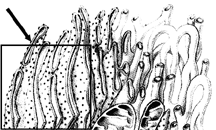All deserts have which of the following in common?
a. low rainfall amounts
b. uniformly high temperature
c. sand
d. sparse vegetation
e. large leafy plants
Answer: a
You might also like to view...
Which of the following is NOT true about the eukaryotic cell cycle?
A. There are two stages to the cell cycle: M phase and interphase. B. The M phase consists of two events: mitosis and cytokinesis. C. Interphase is typically the shortest of the two stages of the cell cycle. D. There are three phases of interphase: the S phase and two gap phases. E. Some cells pause between M phase and S phase for more than a year. F. Some cells pause between the first gap phase and S phase for more than a year.
Explain why the transport of molecules across the cell membrane is considered to be both specific and directional
What will be an ideal response?
Which of the following organisms is most likely to become fossilized?
a. a lake trout b. a mountain goat c. a tulip d. a mushroom e. all of these organisms are equally likely to fossilize
Which of the following functions would most likely be occurring in the structure surrounded by the
box in Figure 4-2?
a. apoptosis
b. dynein movement
c. formation of hydrogen peroxide
d. molecular chaperone activity
e. cholesterol synthesis